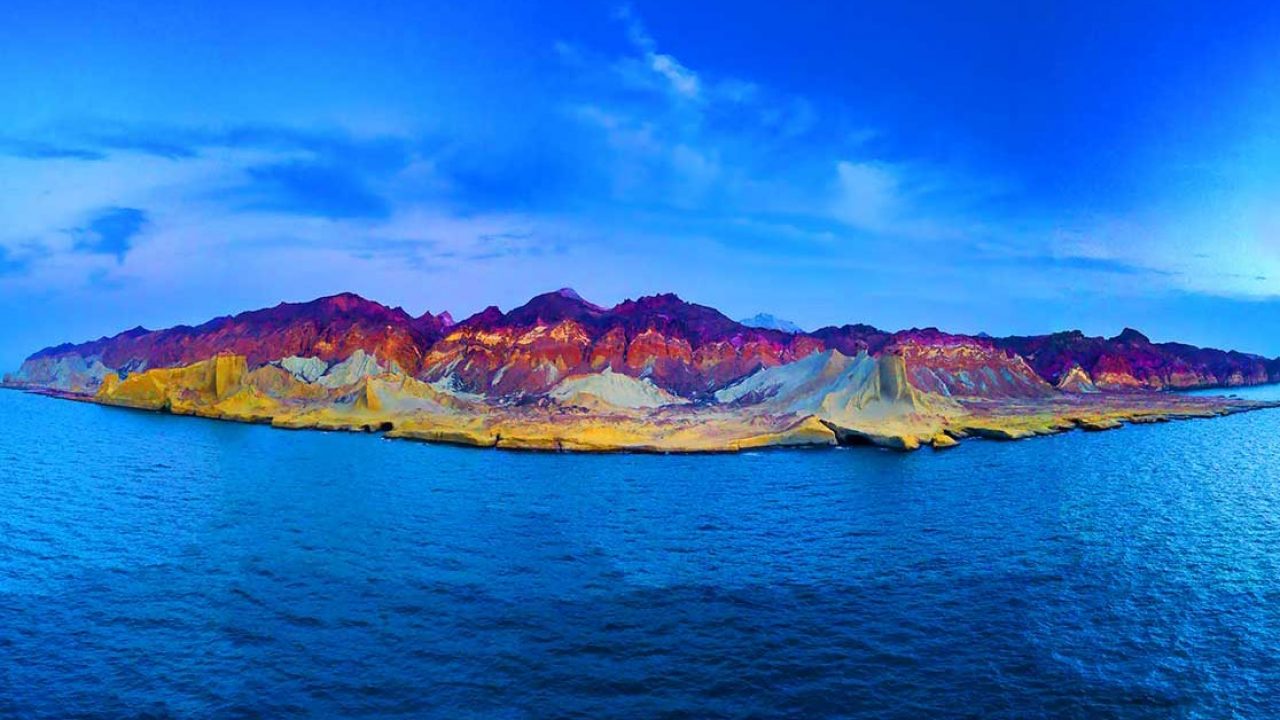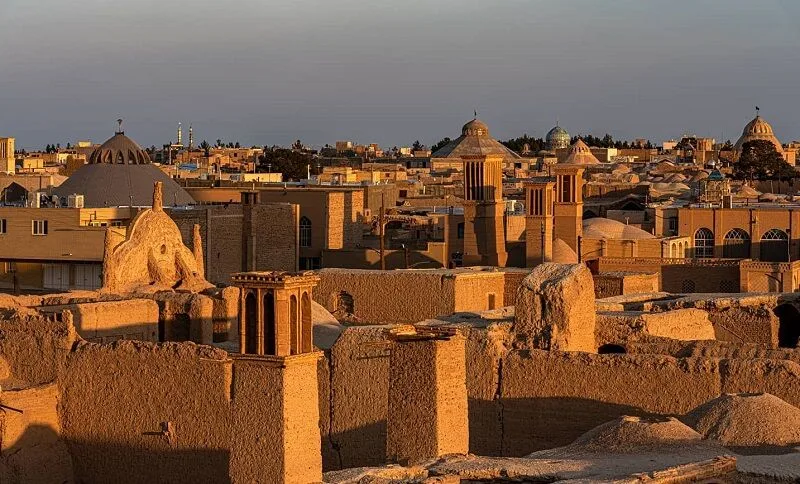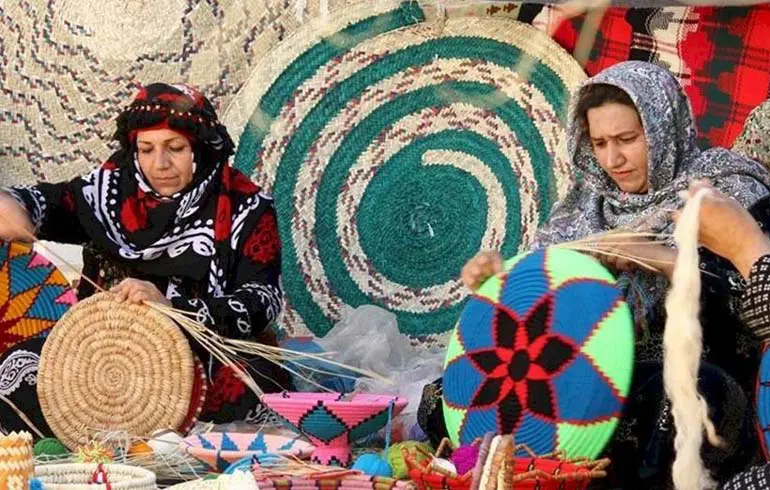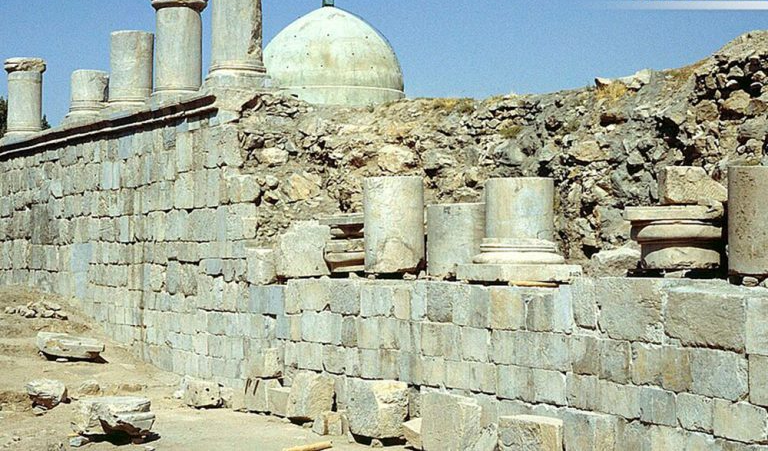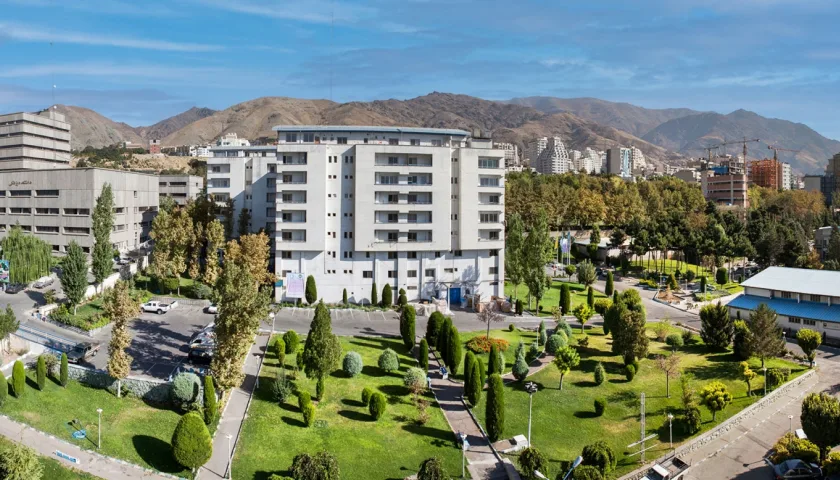10 of the most spectacular attractions in Hormuz that you must see before you die!
The Attractions of Hormuz are one of Iran’s unique sights located in the southern part of the country and the Persian Gulf. To explore this beautiful and mysterious region, first and foremost, we need to know where the island of Hormuz is. Hormuz is a circular-shaped island in the Persian Gulf, covering an area of 42 square kilometers and situated eight kilometers from Bandar Abbas. The name “Hormuz” is derived from the ancient and significant port of Hormuz, which was approximately sixty kilometers away from this island. For centuries, this island has been a crucial region for maritime trade and political relations.
The dry and scorching climate in this area makes Hormuz appear as an uninhabitable and deserted island. Nevertheless, it should be noted that the island of Hormuz is an exceptional attraction for tourism in southern Iran.
The presence of various layers of sediments and volcanic materials has given remarkable quality and coloring to the soil of this island. The diverse and unique soil of Hormuz has made it a paradise and a treasure island for geologists. Extracting high-quality salt and flavorful food enhancers from the fascinating soil of Hormuz is one of the main sources of income for the island’s residents. The beautiful soil and diverse natural wonders spread across different parts of the island have turned Hormuz into one of the captivating areas in southern Iran.
In this article, stay with us as we showcase the attractions of Hormuz to make you even more excited about visiting this beautiful island. You can also explore everything you want to know about the countries around the Persian Gulf on our website gulfcitypedia.com .
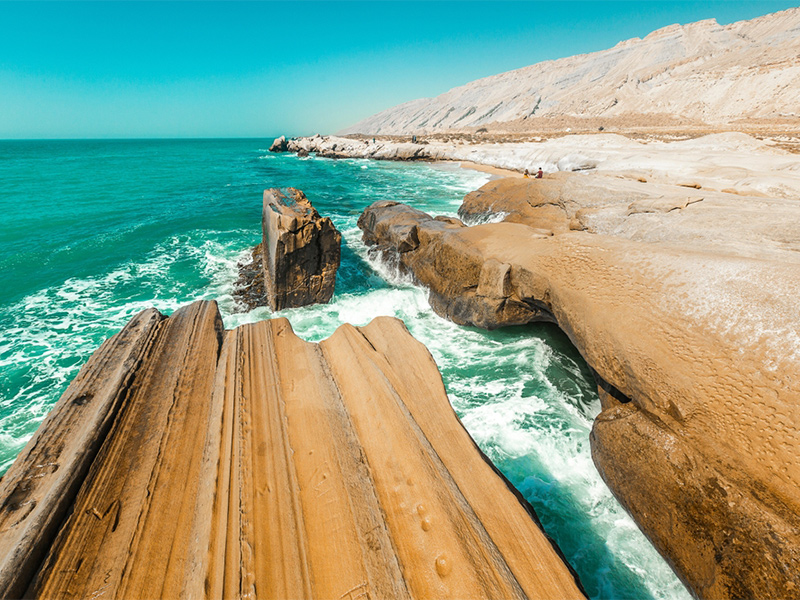
Larak Island
One of the pristine and tranquil attractions of Hormuz is the unspoiled island of Larak, known as the southernmost terrestrial part of Iran. Larak Island is located 22 kilometers from Hormuz Island and 16 kilometers from Qeshm. Due to its unique strategic location, the island serves as a venue for military maneuvers and exercises, providing a clear view of Oman’s coasts. Larak Island has a sparse population, and there are a few historical sites, including a beautiful cemetery with coral stones and the remains of a Portuguese fortress.
The main factor that has transformed Larak Island into one of the attractions of the Hormuz region is its secluded and serene coastlines. The clear blue waters of the Persian Gulf around the peaceful and calm shores of Larak turn the island into a dreamy destination. Relaxing on a quiet sandy beach or engaging in water and beach activities has recently attracted the attention of many tourists to this island. The nights on Larak Island offer one of the most unique and best experiences for nature enthusiasts. Despite lacking luxurious facilities and accommodations, Larak Island is undoubtedly one of the best natural attractions in the Hormuz region.
Portuguese Castle
For history enthusiasts, the Portuguese Castle is one of the most famous attractions of Hormuz. This ancient castle has a history of about five centuries and served as the residence for Portuguese military and sailors during their occupation of southern Iran. The Portuguese Castle in Hormuz is considered a national monument of Iran, having a special and impactful ambiance. This large castle had an area of approximately twenty thousand square meters, with about fifteen thousand square meters remaining today. The notable preservation of such a substantial area is due to the use of resilient sponge-like stones in the construction of buildings, warehouses, and water passages in the castle.
The fusion of Iranian architecture with the European architecture prevalent in the construction of European castles during that era has turned the Portuguese Castle into one of the most fascinating historical landmarks of Hormuz. The towering and rough walls of this castle provide tourists with a vast and beautiful view of the Persian Gulf. Different sections of this castle are accessible to tourists, with the most famous and beautiful being the water reservoir of the castle. Originally, this underground chamber was a church with Iranian-European architecture. Gothic arches and columns inspired by palm trees have given this underground church a special atmosphere.
Due to rainwater seepage into this part, its function was changed to a water reservoir. Weapon arsenals, prisons, the central water reservoir, banquet halls, and accommodation rooms for the forces are other interesting sections of the Portuguese Castle. Two Portuguese cannons and rare head cannons are also among the intriguing equipment that makes the Portuguese Castle one of the famous attractions of Hormuz.
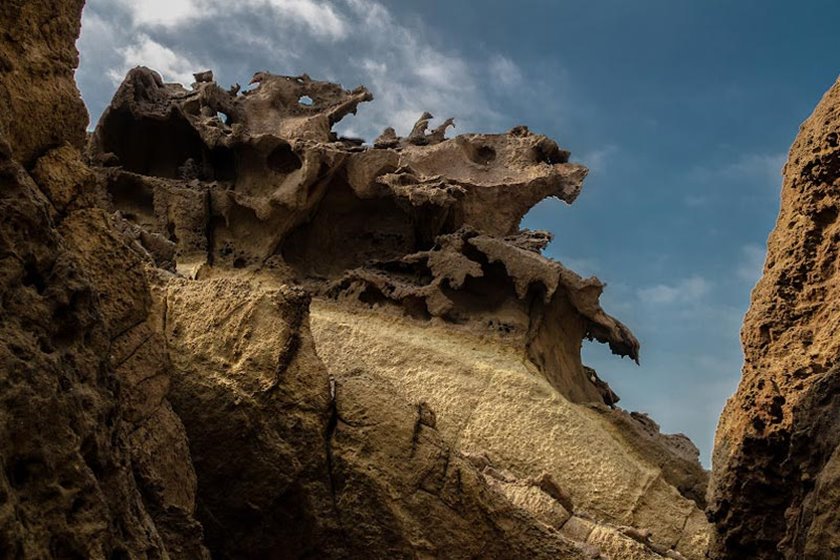
Valley of statues
The Valley of Sculptures is one of the attractions in Hormuz that captivates tourists with its vastness and unique ambiance. Situated in the southwestern part of the island, this area is one of the most beautiful geological phenomena in southern Iran with a history spanning millions of years. The reason for naming this captivating site the “Valley of Star Columns” lies in the various rocks, columns, and different natural formations that proudly present themselves with a distinctive and imaginative appearance to onlookers. These rocks and formations have been submerged in the depths of the sea for millions of years. After the retreat of the sea, this area became part of the dry land, and the rocks and columns, exposed for millions of years, faced intense winds and torrential rains.
The Valley of Sculptures is one of the noteworthy attractions of Hormuz, spanning over a kilometer. Weathered by wind and rain, the sculpted rocks have taken on various shapes resembling statues of humans, animals, and mythical creatures. Each tourist, fueled by their imagination, creates a unique statue or sculpture in their mind from this artistic display of nature. One of the must-see attractions in Hormuz is the mysterious Valley of Sculptures.
The Rainbow Valley
The Rainbow Valley is undoubtedly one of the most beautiful attractions in Hormuz and one of the most valuable natural wonders in Iran. This colorful and astonishing valley is a geological destination in Iran that captures the attention of many scientists worldwide. Consequently, numerous tourists from various parts of Iran embark on a journey to the Rainbow Valley to delight in the magical coloring of nature. Due to the accumulation of various layers of sedimentary and volcanic rocks in the land of Hormuz, the soil in this area boasts a remarkable diversity of materials and compounds. Various salts, alongside minerals with unique chemical compositions, contribute to the formation of the colorful and visually stunning soil of the Hormuz Island.
The pinnacle of nature’s marvel and artistic display in Hormuz is witnessed in the Rainbow Valley. Situated in the southwest of the island, the Rainbow Valley is renowned as one of the famous attractions of Hormuz. The combination and layering of different colors in the surrounding mountains create a mesmerizing and pristine landscape that captivates every observer. Various shades of red, alongside black, yellow, golden, and silvery colors, result from the presence of iron oxide in the sedimentary rocks of the region. Additionally, rocks and formations formed from ashes and volcanic materials exhibit colors such as gray, brownish-blue, green, pink, and white. The captivating interplay and harmony of these beautiful colors against a backdrop of the vibrant blue hues of the sky and sea make the Rainbow Valley one of the most beloved natural attractions in Hormuz.
Salt Goddess Cave
The Turquoise Salt Goddess Cave is another of Hormuz’s attractions that, due to its beautiful and tranquil atmosphere, attracts the attention of many tourists to this area. The Salt Goddess Mountain is a massive and majestic salt crystal in the heart of Hormuz Island. This large salt mountain has formed due to erosion by wind and geological processes over various periods. The Salt Goddess Mountain possesses unique and beneficial salts, creating an atmosphere of unparalleled tranquility for visitors to this area. The orange-colored water that flows through the crystals and under the Salt Goddess Mountain over time has led to the formation of the Salt Goddess Cave or the Turquoise Cave.
The Salt Goddess Cave is one of the most beautiful attractions of Hormuz. Although not very deep or extensive, with a depth of about forty meters, it owes its allure to the wide variety of sedimentary rocks and salts, showcasing over seven different colors on the rocks and crystals inside the cave. The salty stalactites and the soothing sound of water create an unparalleled sense of tranquility in the cave environment. The Salt Goddess Cave is a captivating destination for nature enthusiasts, and when visiting this beautiful cave, observing safety measures and having appropriate lighting equipment is essential.
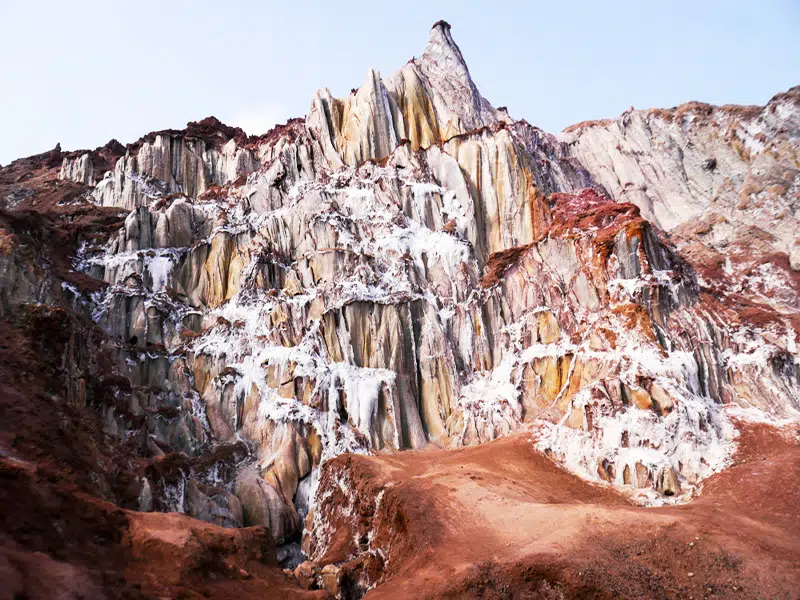
Sea Caves
The towering rocky coasts are one of the special attractions of Hormuz, creating a unique and breathtaking view on the island. Beautiful sea caves have been formed in the slopes of these areas. These caves have a special and exceptional environment that will mesmerize any observer. The sound of the sea waves and their reflections within these caves create a mysterious and beautiful atmosphere. The sunlight and the sea breeze in this pristine and picturesque setting bring extraordinary peace to tourists. Sea caves and coastal rocks are one of the special attractions of Hormuz, providing a memorable experience for visitors.
Sunset Strait
One of the natural attractions of Hormuz that captivates many tourists with its beauty and unique atmosphere is the Sunset Strait. The Sunset Strait refers to a towering rocky wall overlooking the coastal strip and the Persian Gulf. The reason for naming this area as such is the breathtaking and poetic scenery during sunset. Indeed, one of the most unique views of the sunset over the sea can be witnessed at the Sunset Strait in Hormuz.
The combination of red and fiery colors of the sun during sunset against the vast blue backdrop of the Persian Gulf mesmerizes every observer. Add to this dreamlike ambiance the pure silence of this area and the melodious sound of the sea, and you will understand why the Sunset Strait is renowned as one of the most beautiful attractions of Hormuz.
Red Beach
One of the most peculiar attractions of Hormuz that attracts many tourists throughout the year is the Red Clay Beach. As mentioned, the soil of Hormuz Island, due to its various salts and compounds, has a diverse and abundant range of colors. The peak of this colorful display is the Red Beach or Edible Beach. The reason for naming this beautiful beach is the red color of the soil in this area, which is more pronounced compared to other parts of the island. This red soil is used as a flavoring and spice in local dishes and is called “Gelak” or “Delak.”
The Red Beach, one of the most beautiful tourist attractions on Hormuz Island, is located in the south of this island. The stunning coloring of this beach echoes the images sent from the surface of the planet Mars. The combination of colors with iron oxide creates a colorful and red shoreline that extends several meters into the sea. This phenomenon makes the waves reaching the Red Beach appear red and blood-like. Walking on this fascinating beach and watching the beautiful sunset over the Persian Gulf in this cheerful and peaceful atmosphere has turned the Red Beach into one of the best attractions of Hormuz.
Hormuz Island, due to its abundant mineral content in the soil, has red soil, and the sandy soil of this island appears red to the eye. They identify a part of the shores near the red soil mines on this island with the name “Red Beach,” and many tourists visit this part of the island.
An interesting point about the red soil on the shores of Hormuz Island is the minerals inside this soil, which have the potential to be used in various local South Iranian foods as a spice and flavor enhancer. The convergence of seawater on this shore with the red soil color causes the sea in this area to turn red. The soil from this beach is used in various handicrafts and in the dyeing industry. Many tourists walk barefoot on the Red Beach of Hormuz, carry signs of this soil on their bodies or clothes as souvenirs, and take memorable photos. Watching the sunset and sunrise on the Red Beach of Hormuz is also another popular activity in this area.
The primary reason for the red color of the soil on the Red Beach is the abundant presence of iron oxide in this soil. The natives of Hormuz refer to the red soil of this island by the name “Golak.” Red soil from Hormuz is used for cooking various types of fish, jams, local bread, and making various pickles. Although the Red Beach of Hormuz is well-known, there are other picturesque beaches on this island, among which the “Silver Beach” can be mentioned. When visiting these beaches, remember never to take any of their colored soil, as the colorful soils of Hormuz Island are like valuable treasures that should never be taken by tourists. Harvesting the soil from these shores recklessly will lead to the complete destruction of the soil on this island, as soil regeneration on this island requires a very long time.
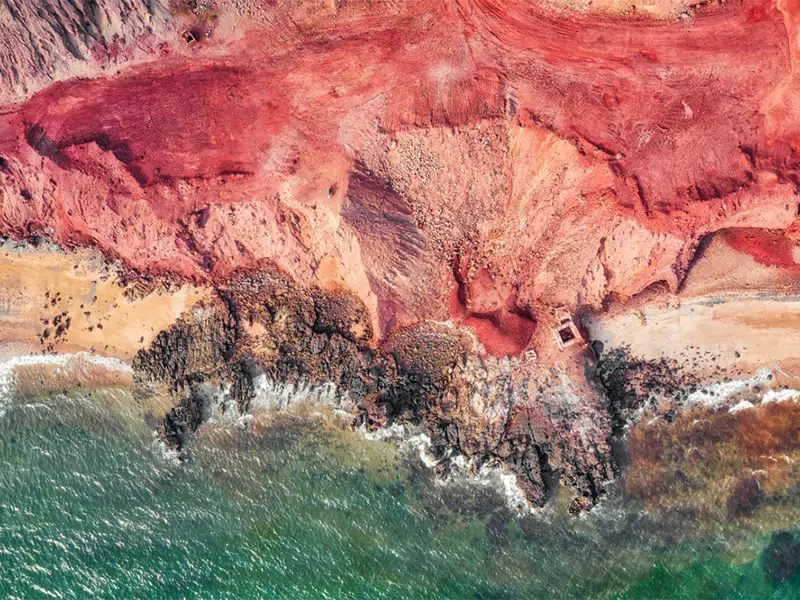
Hormuz Carpets
One of Hormuz’s attractions created by humans is the beautiful earthy carpets of this island. These carpets feature an interesting and attention-grabbing design created by a group of fifty artists from the Hormozgan province, relying on the natural capabilities of Hormuz Island. The creation of these large earthy carpets started in 2008 and continued until 2017. The design and execution of this project took place in seven stages, and it garnered the attention of many tourists. In each of these stages, the carpets were named after one of the symbols, customs, or beliefs of Hormuz Island. The combination of colorful and valuable soils of Hormuz, used as the main material, creates patterns and images that captivate every viewer. These large earthy carpets, inspired by the rich and authentic culture of Iran, especially the southern regions, incorporate verses of the poet Khayyam as a symbol of Iranian literature, local southern music, and the wildlife of this region. Images of local musical instruments, wildlife such as the Persian fallow deer and the loggerhead sea turtle, alongside concepts derived from poetry and literature, have given these carpets a unique and extraordinary appearance.
Hormuz Carpets are one of the cultural and artistic attractions of Hormuz, and each project in its various stages covered an area ranging from 1200 to 1500 square meters.
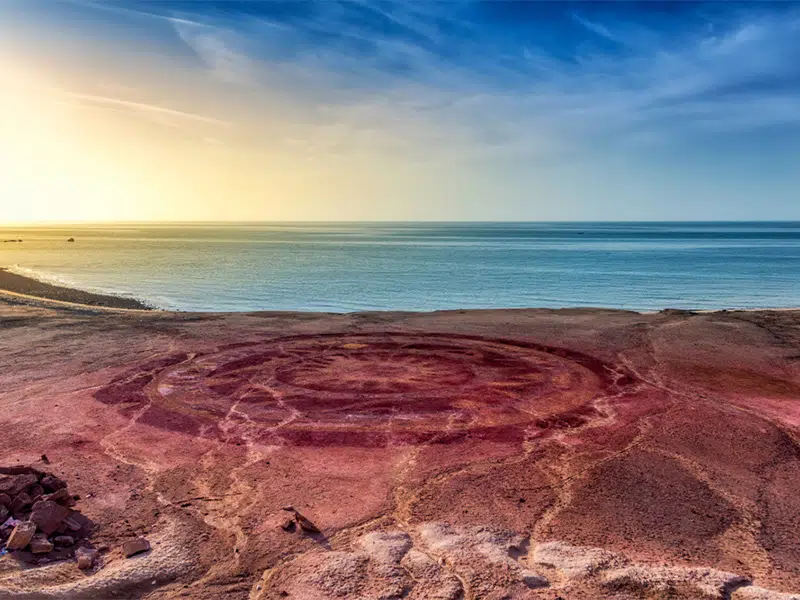
Dr. Ahmad Nadalian Museum
One of the important cultural attractions in Hormuz is related to the field of culture and art. Dr. Nadalian is a renowned Iranian artist and cultural figure internationally recognized. Born in 1963 in Mahdishahr, Semnan, he earned his Ph.D. in Art Philosophy from the UCE University in England. The Dr. Nadalian Museum on Hormuz Island is a unique and noteworthy place that should be visited when traveling to the Hormuz region. Established in 2009, in 2014, the museum was renamed in honor of Dr. Nadalian’s valuable contributions to promoting the beauty of Hormuz Island.
Dr. Nadalian Museum is a non-governmental organization funded by benefactors and independent organizations. In addition to educating children, this educational and cultural institution collaborates with local women in designing and creating artistic works inspired by traditional and indigenous arts and crafts. The museum showcases various captivating works rooted in the culture and beautiful customs of the southern residents of Hormuz Island. The gallery featuring paintings by Dr. Nadalian or works created in collaboration with local artists is one of the fascinating sections of the museum. Dr. Nadalian Museum stands as a cultural attraction in Hormuz where visitors can see diverse and beautiful artworks and choose the best gifts as souvenirs for their loved ones. Sand-printed beads, paintings on pottery and glass, four-piece weaving, and Dr. Nadalian’s works are among the interesting exhibits in this museum.
Chand Derakht Beach (Several Trees Beach)
Chand Derakht Beach, located in the eastern part of Hormuz Island, is often serene and less crowded. If you seek tranquility in nature, want to enjoy the sight of the sea, or fancy a swim, Chand Derakht Beach is the place to go. You might wonder why it’s called “Several Trees Beach.” This beach is the only one on Hormuz Island where several trees have been planted at a distance, and their lifespan is not exceptionally long. Observing these solitary trees has become one of the attractions that many travelers capture in photos as memorabilia.
Sang Morghan Beach
Another attraction in Hormuz is Sang Morghan Beach. In this area, you can see migratory birds during spring and autumn. This region is considered one of Hormuz’s bird-watching locations. The Hormuz sandy carpet is set up on Sang Morghan Beach annually, attracting countless visitors. Remember that Sang Morghan Beach is always busy in the autumn and winter seasons due to the presence of the Hormuz sandy carpet. Located in the northeastern part of the island, access to this beach is very easy.
Monaq Beach
Among the calm and beautiful beaches of Hormuz is Monaq Beach. This beach is sometimes very crowded during certain times of the year, especially in the evenings. The main reason for this crowding is the phenomenon of bioluminescence. Phytoplankton, microscopic marine organisms, come from the ocean to the shores. It’s interesting to note that these organisms produce the majority of the world’s oxygen. The presence of phytoplankton in Monaq Beach in February causes the color of the sea in this area to turn blue or sometimes green at night and also gives a special radiance to the beach during the day. If you want to witness this phenomenon, you should travel to Hormuz during the bioluminescence period. In Iran, only in the islands of Hormuz and Qeshm and the coast of Chabahar, bioluminescence events occur.
Final Tips for Visiting Hormuz Attractions
Hormuz Island is one of the warm and arid regions of Iran, with a striking lack of significant plant cover. It’s called “salt dome” because it sits on an active salt dome, and this, along with sedimentary rocks, volcanic ashes, and various salts, has led to the formation of astonishing natural wonders and the myriad-colored soil. This small island, due to its diverse tourist attractions, is one of the most beautiful and affluent southern regions to transform into a tourist hub. The serene and dreamy environment on the beautiful shores of the Persian Gulf has turned the natural attractions of Hormuz Island into a paradise on earth.

